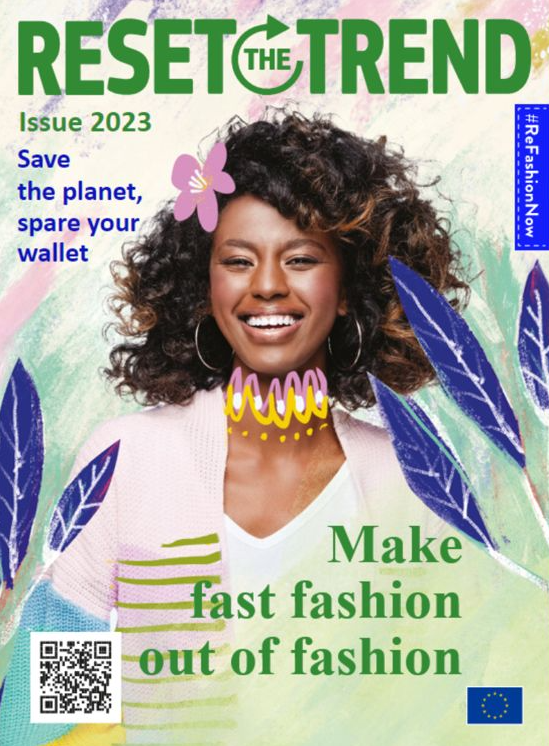The EU fashion and textiles industry is among the most polluting and wasteful sectors, necessitating a complete re-evaluation of the current processes. On the occasion of World Consumer Rights Day on March 15, Virginjus Sinkevičius, the EU Commissioner for the Environment, Oceans and Fisheries, advocates for a fresh start. This includes changes in design, production, recycling, and disposal practices to promote sustainable textiles.
Two centuries ago, the industrial revolution transformed mass-produced fabrics into affordable and stylish clothing. However, the 21st century ushered in a massive acceleration in textile production, with output doubling between 2000 and 2015. The fast fashion phenomenon emerged, bringing with it new problems: mass-produced garments became synonymous with waste, pollution, and a significant depletion of resources. To combat these issues, a new revolution is necessary – one that prioritizes sustainable textiles
With highly industrialized garment production, the latest fashion designs are now just a click away. While fast fashion clothes may appear attractive, they lack durability and cannot be repaired, leading to their disposal in landfills, incineration, or exportation. The overproduction and overconsumption model that exists is spiraling out of control, as evidenced by EU citizens discarding 5.8 million tonnes of textiles and clothing annually. This is equivalent to over 11 kg per person and has a considerable impact on the environment. The textile industry is among the top five sectors for raw materials use and greenhouse gas emissions, and it’s the third-largest user of water and land. As we transition to a decarbonized economy, nearly 70% of textiles still contain materials derived from fossil fuels.
To reset this trend, a fundamental shift in textile production and consumption practices is required to decrease the sector’s environmental impact. This shift is the driving force behind the EU Strategy for Sustainable and Circular Textiles. Textiles and garments must be designed with longevity in mind to ensure they last longer. They must also be made from materials that are environmentally friendly and can be repaired, recycled, or upcycled to create new products. This necessitates a renewed appreciation for the artisanal skills that enable this, a core aim of the European Year of Skills.
 Source: European Commission
Source: European Commission
Young people are essential to this sustainable textile revolution. To achieve it, we need them to act as responsible consumers and become the future designers and producers. The fashion industry already boasts many young role models working to shift mindsets regarding the lifecycle of textiles. Many support EU’s efforts to transform the sector through the ReSet the Trend – #ReFashionNow campaign. Textiles and garments must be designed with longevity in mind to ensure they last longer. They must also be made from materials that are environmentally friendly and can be repaired, recycled, or upcycled to create new products. This necessitates a renewed appreciation for the artisanal skills that enable this, a core aim of the European Year of Skills. Furthermore, 98% of the EU textile sector is made up of SMEs (Small and Medium-sized Enterprises), with many small, eco-savvy businesses run by energetic young entrepreneurs who bravely compete with wasteful multinationals.
The European Commission aims to strengthen a sustainable, circular textile sector and make life easier for visionary SMEs. While final decisions are yet to be made, they are considering training and upskilling through the Pact for Skills. Textiles and garments must be designed with longevity in mind to ensure they last longer. They must also be made from materials that are environmentally friendly and can be repaired, recycled, or upcycled to create new products. This necessitates a renewed appreciation for the artisanal skills that enable this, a core aim of the European Year of Skills, support for second-hand markets, tax breaks, and other incentives for repairers and artisans.
Trends in the fashion industry change, and fast fashion is no exception. As part of the Textiles Strategy, Europe is using three different mechanisms to accelerate this change. The initial strategy is centered on a fresh perspective on design, which is crucial if we aim to sustainably prolong the lifespan of textiles. To decrease microplastics in the marine environment, we must prevent their inclusion in products, starting with the design phase. This concept is the basis of new EU regulations like the Ecodesign for sustainable product regulation, which will introduce novel guidelines to enhance sustainability across various sectors, such as textiles. The EU is currently consulting the public on the sectors that should receive priority treatment. Follow this link to provide your opinion.
The second strategy entails providing consumers with more reliable information. Several of these garments are imported from outside the Union, and Europe wants to promote awareness of their production conditions. This approach goes beyond labeling that merely specifies a product’s origin. It includes more comprehensive data on materials, water consumption during manufacturing, and disposal options. Additionally, the EU will take a more stringent stance on greenwashing, with new regulations for companies in the works.
Lastly, fast fashion often associates with concealed labor exploitation. The Commission is addressing this issue, and last February, they proposed novel guidelines to ensure that manufacturers and suppliers who wish to sell their products in the EU market uphold high EU human rights and welfare standards. This proposal is under discussion among institutions, and we look forward to seeing it soon on the EU books.
The initial industrial revolution heralded the rise of machines, which were soulless, brutal, and detrimental to the environment. Resetting the trend requires a different approach, one that puts people at the core of the process. Our clothes are intimately connected to our skin, it is time to reintroduce humanity to their touch.